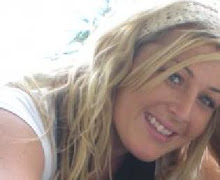 Hi all,
Hi all,I have just uploaded this photo from a Flickr account that I set up today. Flickr is a place where you can store, sought, search and share your very own photos. It offers a place for you to store your photos and create stories with them (Flickr, 2009). As I have always had a passion for photography, I think that Flickr offers valuable tools that can be used for educational and personal experiences. 'Flickr is an online photo management and sharing application. Its primary goals are to help people make photos available to those who matter to them, and to enable new ways of organizing pictures (O'Reilly, 2009).'
When I first signed up to Flickr, I began to upload some of my favourite photos of family members and realised how much editing you can do to achieve whatever desired outcome you wish. I made some photos black and white with one feature colour to attract the objects I wanted to focus attention on. It was here that I began thinking how useful this tool could be in the classroom environment to create photo stories and store memories of activities.
When I first signed up, I noted that there was a privacy question that asked you wanted your profile set to private or viewed by the public. This made me begin thinking about privacy acts and copy write acts in schools and how important it is to have permission from parents to display, store and share photos of the students.
The use of Flickr in the classroom.
Eventually, when I get around to finding a purposeful reason to implement Flickr into my lessons, I will need to definitely assure that all students’ profiles are set to private view only by invited and accepted friends and family members. The students will also be required to have signed permission forms from their parents to ensure that net safety standards are maintained.
Flickr is a great idea to put forward to the students. It allows all learners to advance their ICT skills and use digital cameras to capture their learning experiences and reflect on their learning’s. if the students were to complete science experiments, they could have many photos of each step they took to create the experiment and then create a photo story to reflect on their learnings. Studetns could also create photo stories before activities are done using photos on the internet to predict outcomes. Not only could the students use this for science, but across all learning areas.
Learning Managers need to watch out that the students are on safe sites when accessing photos to ensure their net safety is at high priority at all times. Early childhood students could also use Flickr with assistance from parents and teachers to upload photos for show and tell and to save photos of different animals or surroundings corresponding to the learning activities they are completing in class.
‘Photos from photo sharing sites such as Flickr are a great way to encourage students to write. Providing a word bank can allow students support with challenging vocabulary and it allows them to either copy by typing or cut and paste the text into their response (Accessible Educational Technology, 2008).’
Flickr relates well with Oliver’s ICT framework (AusInfo, 2003), because the students will be given a task to complete and they could use the photos to create a visual slideshow to share with their peers to create a reflection of the learning journey that they have undertaken. The Learning Manager of course has the responsibility of informing the students of the net safety rules and organising activities to ensure the students understand the importance of safety and the internet. As Flickr can be set to private, I find think that it would be a great pedagogical tool to use in the classroom.
References:
Ausinfo. (2003). The learning design construct. Viewed on 28/07/09 from:
http://www.learningdesigns.uow.edu.au/project/learn_design.htm
Flickr (2009). General Flickr Questions. Viewed on 12/08/09 from:
http://www.flickr.com/help/general/
O’Reilly, N. (2009) What is Flickr? Viewed on 12/08/09 from:
http://www.oreillynet.com/pub/a/mac/2005/08/02/flickr.html

Hi Amy. I'm enjoying reading your blog as you are coming from a 'Digital native' perspective and I'm from the 'Digital immigrant' side. I have been editing and manipulating photos and images at home for years using Corel and photoshop. Flickers safety does concern me, even though I can see the benefits in the peers collaborating and reflecting on each others work. I taught my year 7s basic photoshop last term, where they had to manipulate a photo of themselves and combine it with a photo from history. It was great fun, we had Cleopatra, Roman gladitors and even mummies. I will try to embrace Flicker, but will still be cautious in my use of it in the classroom. Stay happy & heathy :)
ReplyDelete